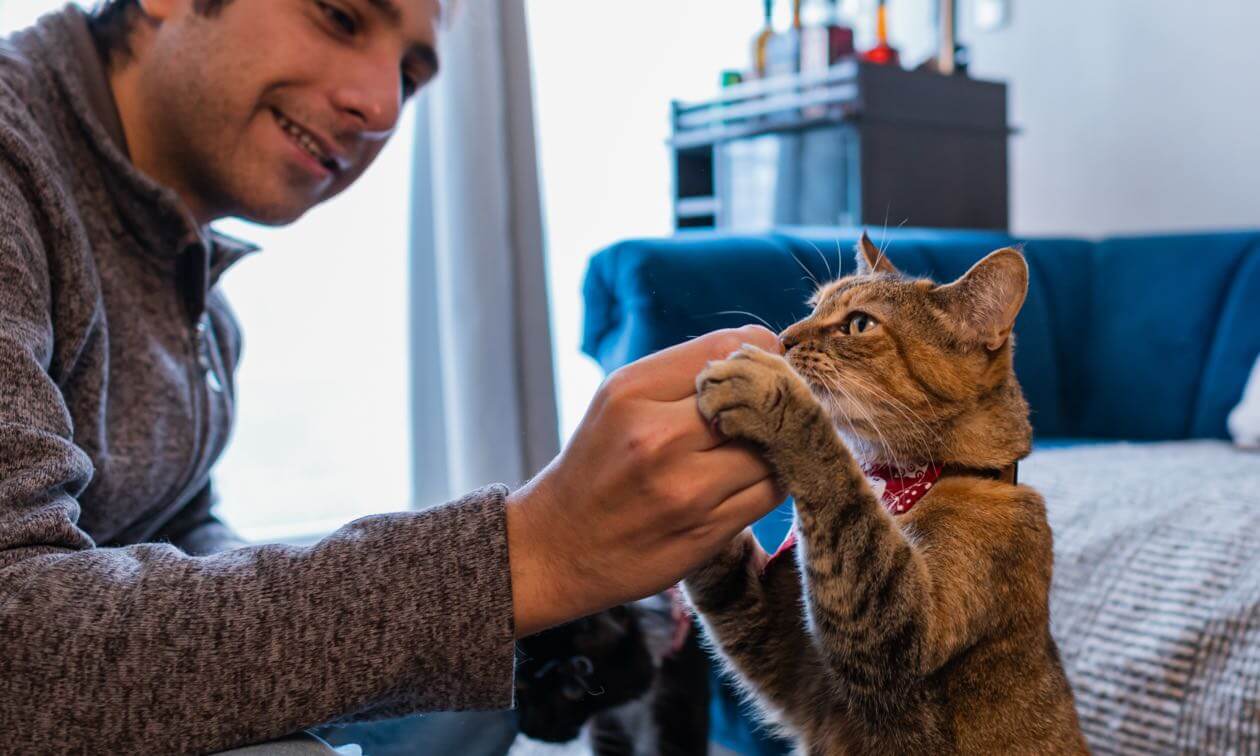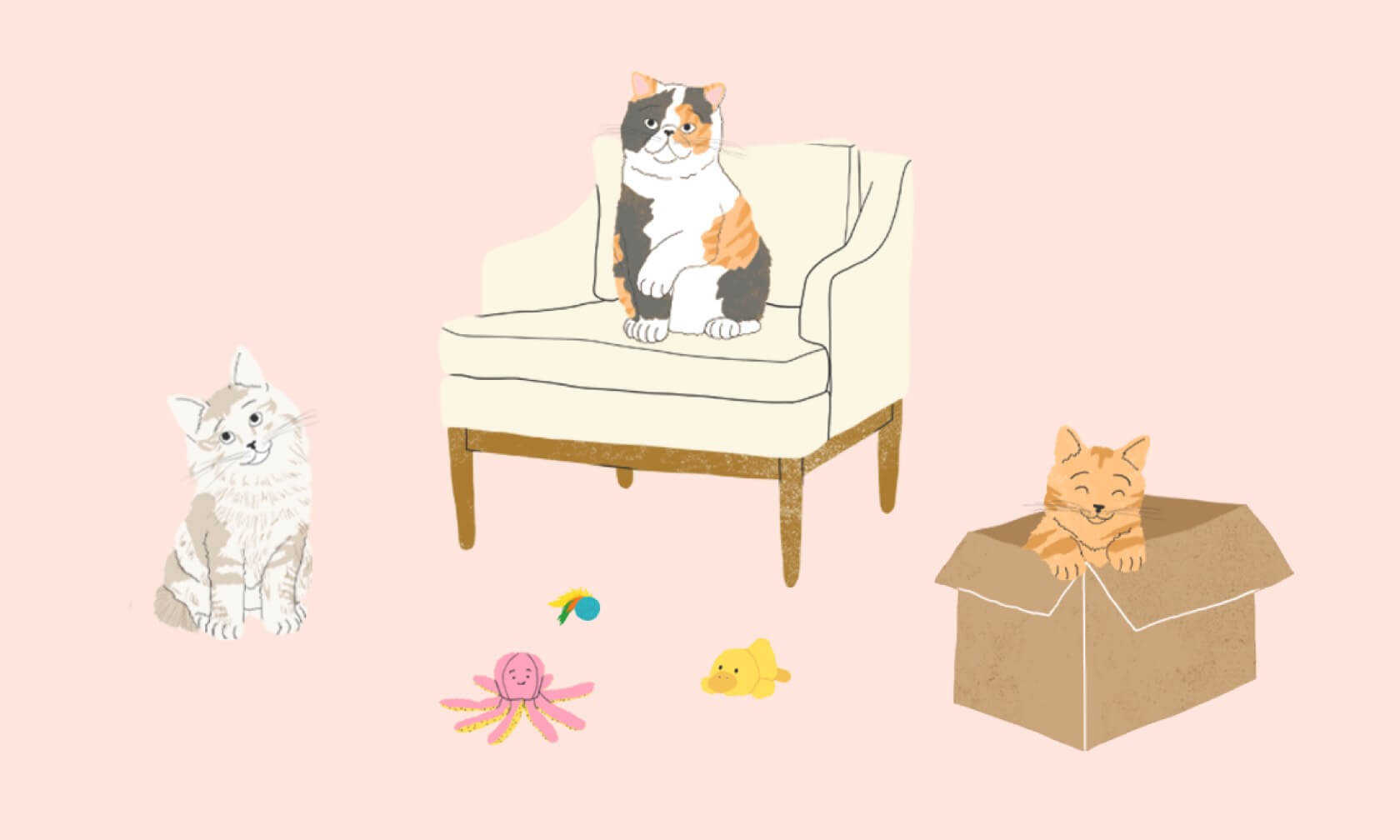Teaching a cat to sit is not only fun but also the foundation for other behaviors you may want your cat to learn (like "stay," "high-five," and "shake hands"). Teaching a cat to sit is a valuable tool to have in your training and care kit. And it's so simple to teach!
Cat Training Basics
First, let's cover some cat training basics. When teaching your cat any new command, keep the following in mind:
- Choose a Good Time
Cats are more receptive to learning when they aren't distracted, nervous, or stressed. Have training sessions when your cat is calm and willing to focus on you. If using treats as a reward, you might conduct the training sessions when your cat is a little hungry. This gives the treat reward more value and can increase the cat's interest in participating for that reward. - Choose a Good Location
A quiet room without distractions is best. Choose a location away from other pets, loud noises, and family activities. Distractions can make it more difficult to maintain your cat's interest in the task at hand. - Choose a Reward that Motivates Your Cat
Rewards used during training can be food, play, affection, and even grooming. You can use anything your cat loves. But it helps if it's something that can be given quickly so they can return their attention to you and the training. - Keep Training Sessions Short
Since most cats have short attention spans, it's best to keep the training sessions brief. Initially, start with sessions that are less than a minute. Over time, the sessions can be increased to as much as 5 minutes. - Consider a Clicker
Cats do beautifully with clicker training. If your cat has already been taught that click = reward, you can use the clicker during this and other training to mark the behavior you're rewarding.
Teaching Your Cat to Sit: Preparation
To teach this behavior, you'll use a lure to naturally guide your cat into position. Food works best for this, but if your cat is not food motivated, you can use a small toy or something else they will focus on. Rubbing a tiny bit of catnip on the toy can help if they aren't responding to the treat or toy alone, though not all cats respond to catnip.
You'll also use a marker word - "Yes!" This sharp, short verbal cue will mark the exact second your cat does the behavior you're going to reward. If your cat is clicker trained, your click will replace "yes" as your marker before rewarding.
If you're not using a treat reward, stick with something quick but valuable, like a chin scratch or cheek rub, based on what your cat enjoys. The faster they can enjoy their reward and return their attention to you, the more impactful your training session will be.
How to Train Your Cat to Sit
- Hold the treat (or toy) between your index finger and thumb. If your cat is overly food motivated and goes for the treat right away, try closing it loosely in your palm so they can smell it but not grab it.
- Position yourself in front of your cat with the treat an inch or two from their nose. You can stand or kneel based on what’s more comfortable for you and your cat.
- Slowly lift the treat 2 to 3 inches upwards from your cat’s nose. They should instinctively follow it with their gaze, looking upwards.
- Slowly move your hand (with the treat) back towards your cat’s tail. Following the treat with their gaze should cause them to naturally sit. This doesn’t always happen right away, especially when they are first learning. Try repeating the movement more slowly or not going back quite as far at first. It also helps not to raise the treat too high. You want your cat to move backward, not go up on their hind legs.
- As soon as your cat’s backside hits the ground, say, "Yes!" and give them the treat (Replace the "yes" with a click if you are using a clicker).
- Repeat steps 1 – 5 as many times as needed, so your cat clearly understands the behavior you want and that doing the behavior will earn them a treat.
- Once they’ve mastered it, add a verbal cue, "sit." Continue marking with "yes" or a click the exact second they sit and then give the reward.
- You can also teach a hand signal instead of, or in addition to, the verbal cue. The hand signal is usually done by starting with your forearm at a 90-degree angle from your body with your palm up. Moving your palm towards your shoulder, say "sit" at the same time. You can fade the verbal cue over time, so your cat can respond to the hand signal alone.
- Once your cat responds consistently to the verbal cue and/or hand signal for sitting, increase your distance from the cat before asking them to sit and encourage them to sit for longer before offering a reward.
- Once your cat consistently sits on command, start rewarding intermittently. This means you gradually decrease the number of treats given, so they don’t get a treat every time they sit. But always respond with "Yes!" so they know they are still correctly doing what you are asking of them. In time, your verbal praise can be as rewarding as a treat.
ZPC-02426



